Ryan Hall's Blog, page 117
December 7, 2017
SPONSORED: Normatec Pulse Leg Recovery System
Normatec Pulse Leg Recovery System, $1,395
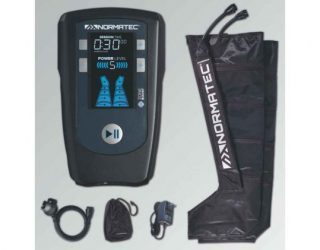
The 2018 NormaTec PULSE is the ultimate in athlete recovery. NormaTec uses patented compression technology to enhance the body’s natural ability to recover. Using NormaTec’s full-length compression boots before or after training boosts circulation, conquers soreness, flushes out lactate, decreases inflammation, and increases range of motion. Invented by an MD, PhD and perfected by professional athletes, the NormaTec PULSE Series is the go-to recovery system for the world’s best athletes.
For more information, and to buy your own PULSE, visit NormaTecRecovery.com
The post SPONSORED: Normatec Pulse Leg Recovery System appeared first on Competitor.com.
December 5, 2017
Young Living Peppermint Essential Oil
Young Living Peppermint Essential Oil, $28
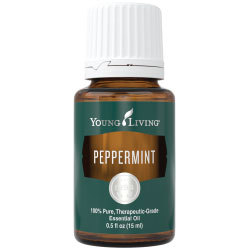
If every runner had one essential oil, this would be it. A whiff can invigorate and settle a nervous stomach. A drop in a massage oil soothes muscles. youngliving.com
The post Young Living Peppermint Essential Oil appeared first on Competitor.com.
Toad&Co Shire Sweater Legging
Toad&Co Shire Sweater Legging, $125
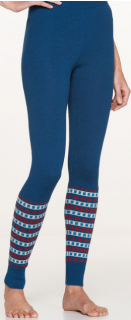
This special version of merino wool means these are naturally stretchy without the itch. toadandco.com
The post Toad&Co Shire Sweater Legging appeared first on Competitor.com.
Rocco’s Healthy + Delicious
Rocco’s Healthy + Delicious, $30

Award-winning chef Rocco DiSpirito is also a runner, so you can trust his protein pancakes and snickerdoodle(!) green smoothie. harpercollins.com
The post Rocco’s Healthy + Delicious appeared first on Competitor.com.
Oofos Oocloog Sport
Oofos Oocloog Sport, $70
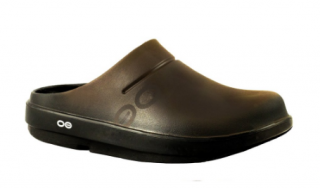
The squishy sole of these men’s recovery shoes can take away running pains. (Similar styles are available for women.) oofos..com
The post Oofos Oocloog Sport appeared first on Competitor.com.
Sarah Marie Design Studio Running Sucks Mug
Sarah Marie Design Studio Running Sucks Mug, $18
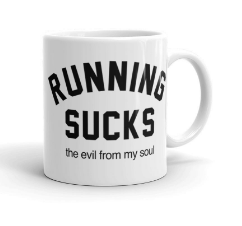
Time to celebrate the redemptive power of running. sarahmariedesignstudio.com
The post Sarah Marie Design Studio Running Sucks Mug appeared first on Competitor.com.
Theragun G2Pro
Theragun G2Pro, $600
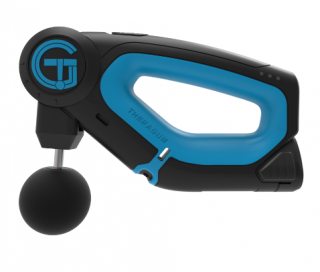
Recover like a professional athlete with this deeper-tissue massager that uses vibration therapy. theragun.com
The post Theragun G2Pro appeared first on Competitor.com.
Bedgear Solar 1.0 Performance Pillow
Bedgear Solar 1.0 Performance Pillow, $199
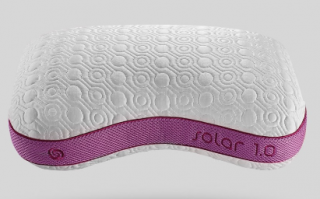
Inspiration from athletic apparel gives this brand’s wide range of pillows the ability to regulate body temperature. bedgear.com
The post Bedgear Solar 1.0 Performance Pillow appeared first on Competitor.com.
December 1, 2017
5 Reasons Why Stretching Calf Muscles is So Important To Runners
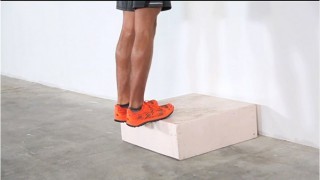
As runners, we think of our feet, back, hamstrings, knees and plenty of other body parts before we get around to thinking about our calves. But many don’t realize how stretching calf muscles could help runners in several ways, including giving them better health and faster times!
Understanding that stretching is incredibly important isn’t news to an experienced runner. While some stretch before running, others choose to stretch after, and many play it safe and stretch both before and after running.
Stretching calf muscles, however, may be the most important thing a runner can do other than putting one foot in front of the other. Orthopedic surgeon Dr. Prasad Gourineni believes that calf tightness “is the most important muscle tightness in the entire body.”
The calf acts as a plantar flexor for the ankle joint, which means it controls the movement of pointing the ball of your foot downward, which is especially important in running. The calf uses the foot as a lever as it raises the heel. If you are going uphill, you need more power from your calf muscles. If you are going downhill, you need more control from your calf muscles.
What’s interesting is that traditional calf stretches don’t preserve the integrity of the arches in our feet. A product like The Healthy Stretch, which runners stand on barefooted before and after running, affects the arch and calf muscles differently than any other stretches.
5 Reasons Why Stretching Calf Muscles is So Important For Runners
There are plenty of benefits to stretching calf muscles, but we picked out a handful runners should consider the most.
Decreases Acute Muscle Strains
Sitting in a chair at a desk is not what a human was meant to do 8-10 hours per day, which means our feet are plantar-flexed in a forward position. If your calves are tight, the other muscles in your legs and back will have to compensate, which means you’ll get more aches and pains.
Decreases Risk of Plantar Fasciitis
The calf muscles are made up of two separate major muscles on the back of the leg. The gastrocnemius muscle lies on top of the soleus muscle, and by stretching both, you keep the inflammation down on the thick band of tissue that runs across the bottom of your feet, connecting your heel bone to your toes. That inflammation is plantar fasciitis, which can feel like a stabbing pain in the foot.
Improves Balance and Running Form
Running and exercising tightens and shortens muscles, whereas stretching them can help increase mobility over time. The more flexible you are, the easier it is to keep proper running form. Your calf muscles communicate with your other muscles neurologically to keep you upright and not swaying.
Prevents Chronic Foot Injuries
While plantar fasciitis is one of the most debilitating injuries calf stretching prevents, it also wards off arthritis of the foot and ankle, flat feet, diabetic foot ulcers and even stress fractures!
Keeps Arch Integrity
The tarsal and metatarsal bones in your foot help form the arch, which allows your body to support its weight, and enables you to walk with correct posture without pain. Stretching the calf helps your arch, which is also strengthened by ligaments and tendons, helping the rest of your body, too.
Stretching calf muscles is very important for runners, so consider doing it both before and after your runs, and use a product like The Healthy Stretch to strengthen your calves and protect your arch.
The post 5 Reasons Why Stretching Calf Muscles is So Important To Runners appeared first on Competitor.com.
November 17, 2017
Five Pre-Race Fueling Tips
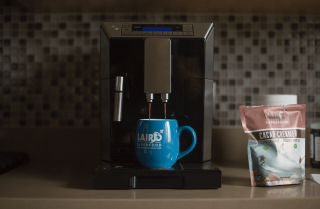
Having the energy you need to on race day is imperative. What and when you eat over race weekend can have a big influence. These five tips will help you dial in your nutrition and hydration, so you can dial up your performance when you hear the starting gun.
Practice with your long runs. You’ve likely heard you shouldn’t try anything new on race day. That applies to fueling before the race too—the day before. Try out a dinner the night before a long run that you think will work race weekend. Keep in mind whether you’ll be traveling and seasonal ingredients that could change. Then eat breakfast, if not at the same time as race day, at the amount of time you’ll eat in advance of the race. Basically, you want to simulate race day.
Hydrate today for tomorrow’s run.It’s too late to gulp lots of water on race morning if you forgot to keep sipping the day before. Your hydration needs vary based on the heat, humidity and your own individual body, so pay attention. The basic rule is to drink when you are thirsty, throughout the day. Including electrolytes in your water bottle is ideal before a race. Laird Superfood HYDRATE is ideal and has only two ingredients: pure freeze-dried coconut water, which contains potassium and electrolytes to replenish your body’s fluids, and Aquamin™, a calcified sea algae harvested in Iceland that has 72 trace minerals and is rich in calcium. Just add the powder to your bottle throughout the day for tasty, electrolyte-filled coconut water on-the-go with no artificial ingredients and 40 calories per serving.
Eat more simply than usual. Are you the kind of eater who goes for brown rice over white or kale rather than iceberg lettuce? Would you dare peel away the skin of a cucumber or skip the side of beans with your tacos? The night before a race is the time to consider it. Those extra nerves on race morning can help accelerate a trip to the porta-potty, and if you’ve eaten easily digestible foods, then your body doesn’t have to focus on your digestive track. When you’re racing, you want as much energy as possible in the muscles that make you go.
Breakfast is the most important meal. As soon as you get up on race morning, you should drink some water and eat. Like the night prior, you’ll want some easily digestible carbohydrates to top off your energy stores. You should also include protein and fats to give your meal staying power. A bagel with peanut butter and banana is a go-to for many runners. Others swear by eggs and toast. Whatever you choose, make sure you’ve eaten it before (see No. 1).
Don’t skip your coffee. Some runners think they shouldn’t have coffee on race morning because of potential laxative effects, but the benefits of caffeine are proven when it comes to enhancing your performance. Especially if you always drink coffee, to eschew a cup on race morning will leave you with less pep than in your usual step. Some runners even decrease coffee in advance of racing, so they can have some on race morning and get more of a jolt. What you put in your coffee should also be good for your gut. Laird Superfood makes all-natural powdered creamers (perfect for race-weekend travels!) designed to provide added energy. With no artificial ingredients, they are dairy-free, vegan and non-GMO. The base is a combination of coconut milk powder and coconut oil, Aquamin™ —these fats provide a slow-burn release of energy for 4–6 hours. Perfect for race day!
The post Five Pre-Race Fueling Tips appeared first on Competitor.com.
Ryan Hall's Blog
- Ryan Hall's profile
- 21 followers



